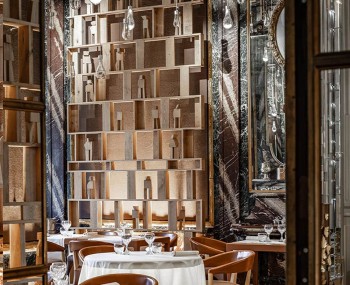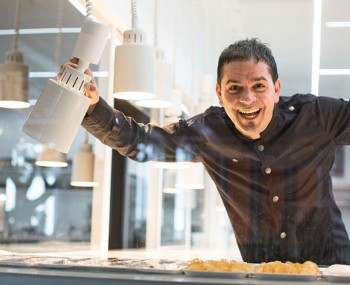With a degree in Sociology, experiences in grill restaurants, and an internship at Frantzén in Sweden, he leads one of Slovenia's most prestigious restaurants at the age of thirty-four: the story and cuisine of David Žefran.
Cover photo: CAPN ARCHITECTURAL PHOTOGRAPHY
Article photo: Lorenzo Noccioli
The establishment
The new and unique two Michelin-starred Slovenian restaurant is housed within a charming boutique hotel that bears its name, Milka. Surrounded by the Julian Alps and facing Jasna, an artificial emerald lake with wooden bridges and a natural Kneipp path.

A couple of kilometers away are the ski slopes that have made Kranjska Gora one of the most popular ski resorts, hosting the Alpine Ski World Cup every year. The hotel's structure is a precise synthesis of comfort and sustainability, demonstrating that ethical luxury can indeed be translated into concrete terms. The complex originates from the restoration of a former pension, resulting in six rooms, including three suites; the restaurant, with its informal refinement, where natural wood and clean design merge, accommodates around twenty guests and features a large lake-view terrace that will be enclosed with glass for the coming winter.


The six rooms, including three suites, are furnished in a perfect blend of contemporary mountain design, minimal and refined, with a selection of local materials crafted by local artisans. The entrance is in the semi-basement, adjacent to the sauna, utilizing local wood, striving for imperfect cuts to minimize waste.

The wood used for the exterior facades has been treated with a kind of burning and subsequent brushing to achieve a dark color as required by landscape regulations but without the use of paint. Time will gradually reveal the most congenial chromatic effect on the aesthetics of the surrounding nature. For the renovation and interiors, the common denominator is the attention to the environment, which the Slovenian studio Gartner Architects applied to the concept underlying this hospitality project, earning them the BIG SEE Architecture Award 2023 for tourist buildings. Cosmetics and product lines, such as soaps and creams, are handmade, made with organic raw materials, and have no plastic containers, slippers are made of felt obtained from recycled PET.


The ceramics, plates, cups, and utensils, with minimal design, are entirely handmade by Kolektiv DVA, a group of architects and designers from Ljubljana who decided to dedicate themselves to ceramics a few years ago. Breakfast perfectly reflects the philosophy of the place, with a generous selection of dishes, from herb omelets to cheeses, to cold cuts reflecting a varied territoriality, which in this mountain corner means three countries, Slovenia, Italy, Austria, merging their borders.
The Chef and The Restaurant
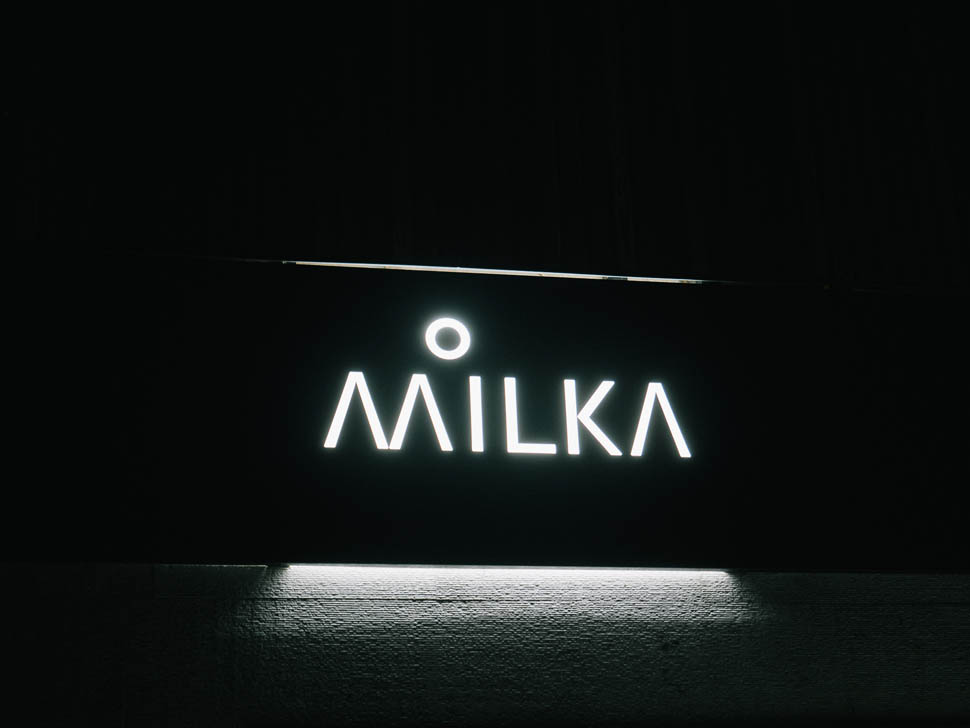
Chef and co-owner David Žefran describes Milka not purely in culinary terms but as a project that embraces hospitality in a broad sense, where cuisine is just one element of the wellness experience offered. This is probably aided by his background, a degree in sociology, experiences in grill restaurants, and an internship at Frantzén in Sweden, leading him to run one of the most prestigious Slovenian restaurants at the age of thirty-four. Just a couple of weeks ago included in the 50 Best Discovery selection of The World’s 50 Best Restaurants, after receiving the second Michelin star last September, a year after the first, awarded by the Red Guide just three months after opening.
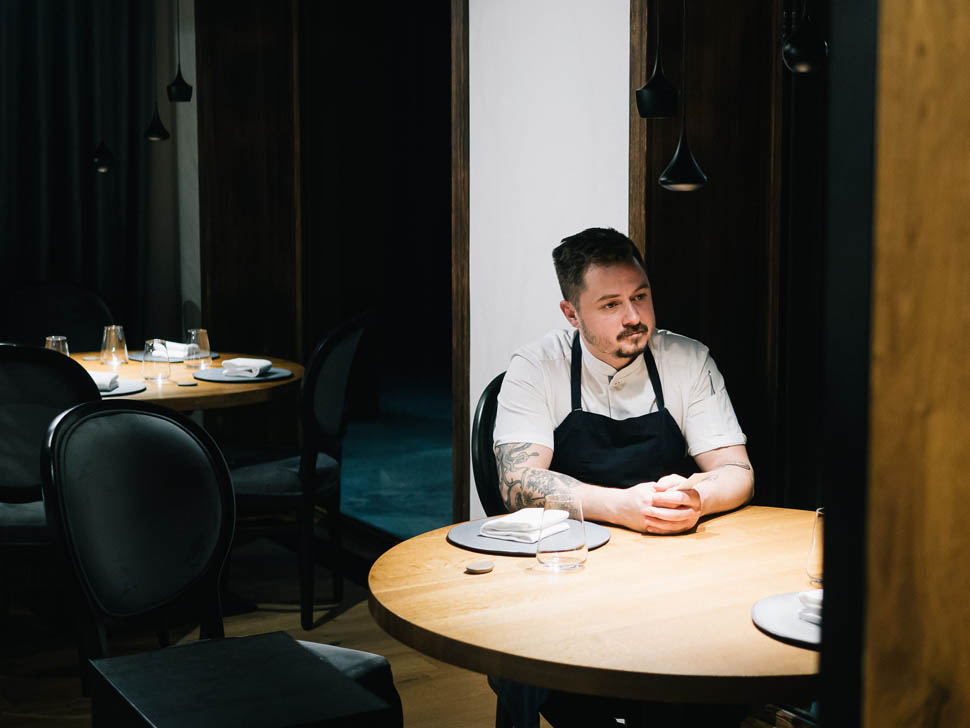
A key element of this place's success is the common goal of the entire staff, mixed with pronounced enthusiasm and a constant search for products. "We offer a unique tasting menu," says Chef Žefran, "that reflects the biodiversity of our land. I personally take care of the vegetable garden, which we have a few kilometers from here, which is a source of creativity and work focused on maximum waste reduction."

Similarly, in the dining room, managing the service, Lenart Plavčak, swift and generous with stories about the products, in distancing himself from any form of affected formality, proposes an extremely convincing and truly surprising pairing of local wines, sake, kombucha, beers, and even coffee. Inevitably, the cuisine is based on alpine and Nordic influences, drawing from a multifaceted gastronomic culture that, filtered through solid techniques and skills, releases unexpected flavors scattered along a path of great gustatory entertainment.

The dishes
The appetizers that kick off the menu arrive one by one, not in the typical flurry of trays, plates, and bowls that usually characterize the presentation of amuse-bouche. Already drawing from recipes from the 1600s with Linzer biscuits, typical tea biscuits also from Tyrol and Austria, reimagined in savory form, with crispy chicken skin, a parfait of livers, and cress.

Following this, a preparation that reduces waste by using cheese rinds served at breakfast, which are then recovered and transformed into an emulsion, placed on a fried pasta canapé, with a covering of carrot shavings cooked in hazelnut butter, along with other fresh, just-marinated ones. Fermented apricots, lemongrass oil, and timut pepper enliven with acidic and slightly pungent notes. The toasted yeast cream and coffee oil placed on the tartlet are complemented by roasted Jerusalem artichokes, with radicchio turning bitter, the acidity of fresh apple, and Jerusalem artichoke peel for a slight crunchiness.

The bold flavor of the chamois tartare harmonizes with the malt of the focaccia that supports it, while the smokiness of the smoked ricotta intercepts that of the burnt leek threads. The Danube salmon is succulently perfect; it is caught in Bohinjska Bistrica, a few dozen kilometers from the restaurant, which after dry salt marination is served with a buttermilk sauce, mussel water, verbena oil. And a dressing of fermented chili peppers and pickled gooseberries.


One of the dishes that encapsulates Žefran's aesthetic, along with an emission of pure gustatory pleasure, is the steamed red beetroot that rounds off its austere earthiness in a red onion sauce and a cream of cream, bear fat, and fig leaf oil. And the Osietra caviar that bursts forth with provident savoriness.

A ruche of black kale with a crispy bitterness covers the kohlrabi, first grilled hibachi-style, then marinated in a ponzu sauce with mountain herb infusion, served with caramelized milk and dotted with juniper sprouts. The coup de théâtre comes with coffee as a paired beverage, a Banibeans filter, and a 22-year-old roaster from Ljubljana, the species being a Kenya Kamvara with hints of black tea and mango.


The butternut squash from the garden is slowly cooked in butter after being infused with hay, served with lard, mussel emulsion, for the pairing of a gradation of marine sweetness, while the sauce with reduced whey and sea buckthorn closes with a hint of acidity veering to bitterness.

The scampi from the Croatian islands of Kvarner are cooked over an open flame and are a burst of sweetness in an umami mood, due to the dusting of smoked paprika, semi-immersed in a candied turnip and fermented herb sauce, with pork cracklings.
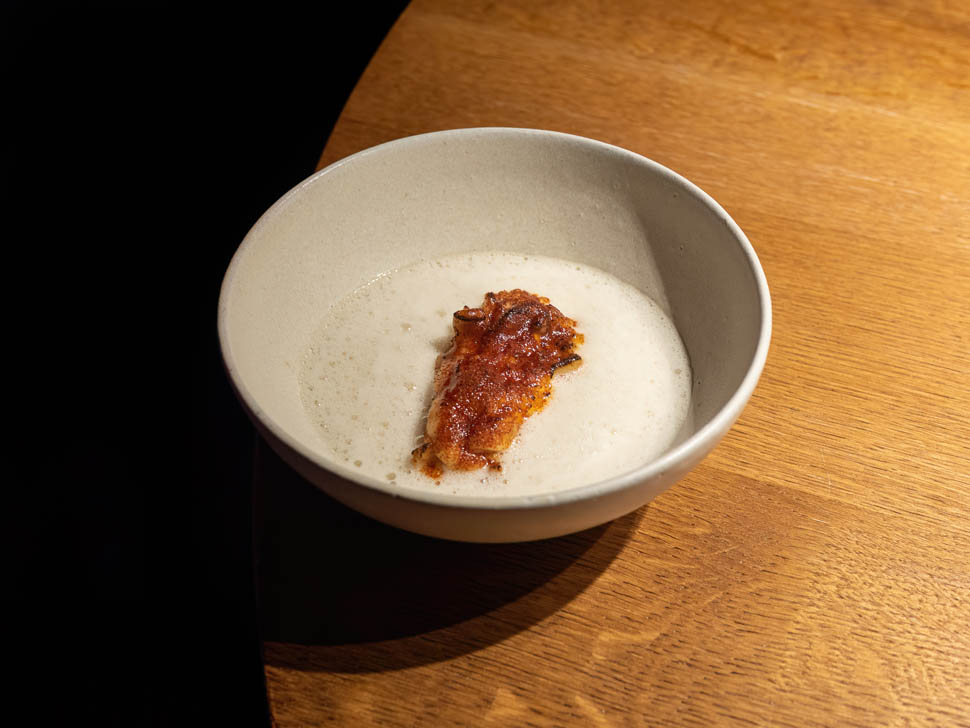
As there is no meal in Slovenia that does not involve at least one beer, at this point, it's time for New England, an IPA acidified with lactic acid cultures, American hops, acidic for the lactobacilli, from Reservoir Dogs Sour Sister in Nova Gorica. Perfect with the succulent pig's head croquette, leek emulsion, mussels, and fermented celery jelly.

The brioche with impeccable leavening is brushed with honey, with fennel and anise seeds, and is accompanied by fermented butter and chives and, separately, spicy sunflower seeds.

The previously oil-cooked trout is smoked with juniper, to be dipped in a sauce of fermented fish heads garum and an infusion of roasted fish bones, which, together with the fish eggs, intensify and clearly define the perimeter of flavor.

The venison is slowly grilled on the hibachi, resting on a fried bread pudding with chicken livers and a paste of fermented plums and marrow. Accompanied by a dark beer and game bone sauce and a toasted coriander-infused butter, it is covered with a pungent and bitter red cabbage leaf. In the tumbler, a milk punch with Pierre Ferrand cognac, dandelion root, lemon balm, and milk.


Jurka is an irresistible duet between "sweet" and "not sweet;" it is a pre-dessert that magnifies the homonymous variety of grape, a kind of strawberry grape, from which the chef has made a compote, to which Tasmania pepper is added, a goat blue cheese ice cream, a jelly of the same grape brandy, meringue, geranium, frozen kefir foam, and Jurka granita.

Even the dessert is of a substantial gustatory grace, it is a sea buckthorn sorbet that accompanies an apple compote, with condensed milk foam and bee pollen, to be wrapped in a pair of beer waffles spread with lavender honey.

Excellent with homemade ice wine vermouth to which verjus and aromatic herbs are added. The final petit fours are polyhedral: a honey and fig leaf parfait, physalis, fennel; choux bun filled with plum jam, miso cream, apricot-infused chantilly; sweet potato, blueberry compote, anise, grated egg yolk; Borovničevec jelly, a blueberry distillate traditionally used for aperitifs, and verbena.

A parade of homemade liqueurs vivaciously closes the journey, the choice is between apricot, plum, chestnut, chanterelle mushrooms, fruit in spirits, blackberry, corn, herbs, Jerusalem artichoke, to be sipped with tiny hazelnut flour and Slovenian pork fat glazed apple juice cakes.

Contacts
Milka
Vršiška cesta 45, 4280 Kranjska Gora, Slovenia
Phone: +386 597 79590



